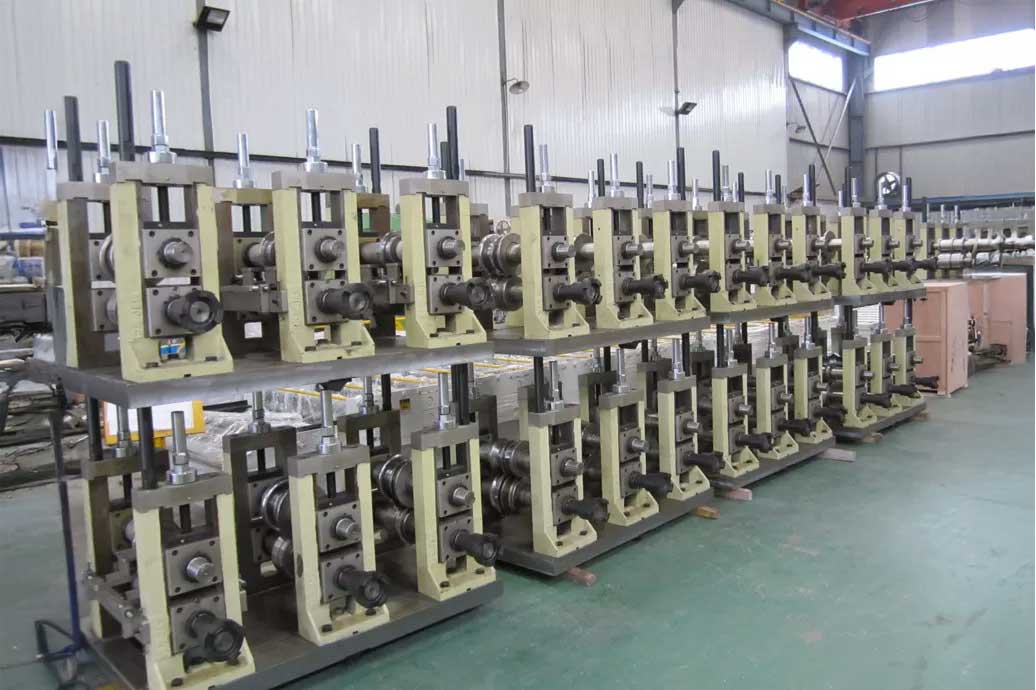
While purchasing a second-hand roll-forming machine is a cost-effective solution, it is critical to carry out regular maintenance and overhauls as needed to ensure that the machine operates long-lasting and efficiently. This guide provides comprehensive information on the maintenance and overhaul of used rollformers. As Interberk, we have tried to inform you about the maintenance and repair of your second-hand roll forming machine in this guide.
Importance of Care:
Regular maintenance optimizes the performance of the roll forming machine, reduces the risk of failure, extends its life and prevents disruptions in production. Maintenance operations include cleaning, lubricating, adjusting, and checking the different components of the machine.
Types of Care:
- Daily Maintenance: These are simple operations that should be done at the end of each working day. Cleaning the machine includes operations such as checking oil levels, tightening loose screws and connections.
- Weekly Maintenance: These are more detailed checks that should be done once a week. It includes checking, lubricating, and cleaning rolls, bearings, gears, and other moving parts.
- Monthly Maintenance: It is a more comprehensive maintenance that should be done once a month. It includes operations such as detailed inspection of all components of the machine, replacement of worn parts, and checking electrical and hydraulic systems.
- Annual Maintenance (Major Maintenance): It is the most comprehensive maintenance that should be done once a year or at the end of certain working hours. It includes the complete disassembly of the machine and the inspection, cleaning, repair or replacement of all its parts. It is generally recommended to be done by specialized technical services.
Points to be considered in maintenance:
- User Manual: Read the machine's user manual carefully and follow the manufacturer's recommended maintenance procedures.
- Proper Lubrication: Use the correct type of oil for different parts of the machine and respect the lubrication intervals. Improper lubrication can cause wear and failure of parts.
- Cleaning: Clean the machine regularly and keep it free of metal dust, oil residues and other contaminants. Cleaning makes parts look better and last longer.
- Replacement of Worn Parts: Replace worn or damaged parts in a timely manner. Worn parts can reduce the performance of the machine and damage other parts as well.
- Control and Settings: Check the machine's settings regularly and adjust them as needed. Incorrect settings can affect profile quality and damage the machine.
Significance of Revision:
Overhaul is a more thorough repair and refurbishment of the machine. It is usually necessary when the performance of the machine decreases, failures become frequent, or when it is used for a longer period of time. Overhaul operations include operations such as completely disassembling the machine and inspecting all parts, replacing worn parts, renewing electrical and hydraulic systems, repairing or renewing molds.
When is a revision necessary?
- Loss of Performance: When the production speed, profile quality or precision of the machine decreases.
- Frequent Breakdowns: When frequent breakdowns occur in the machine and repair costs increase.
- Long Use Time: When the machine has been used for many years and has worn out significantly.
- Technological Inadequacy: When the machine is technologically behind and does not meet current production standards.
Revision Process:
- Evaluation: Detailed examination of the machine by an expert team and determination of the need for revision.
- Planning: Planning the revision processes, procuring the necessary parts and creating a timeline.
- Application: Revision operations are carried out by expert technical personnel.
- Test and Control: Testing the machine and checking its performance after the overhaul is completed.
Advantages of Revision:
- Extended Machine Life: Overhaul significantly extends the life of the machine and delays the purchase of a new machine.
- Increased Performance: Overhaul improves the performance and efficiency of the machine.
- Improvement of Product Quality: Revision improves the quality and precision of the profiles produced.
- Reduced Risk of Failure: Overhaul reduces the risk of machine failure and prevents disruptions to production.
Important Notes:
- It is recommended that you have maintenance and revision operations carried out by expert technical services.
- Keep maintenance records of the machine regularly.
- Work with reliable suppliers for the supply of spare parts.
Maintenance and overhaul of a second-hand roll forming machine is critical to the longevity and efficient operation of the machine. Regular maintenance and revisions when necessary increase the production efficiency of your business and reduce costs.
